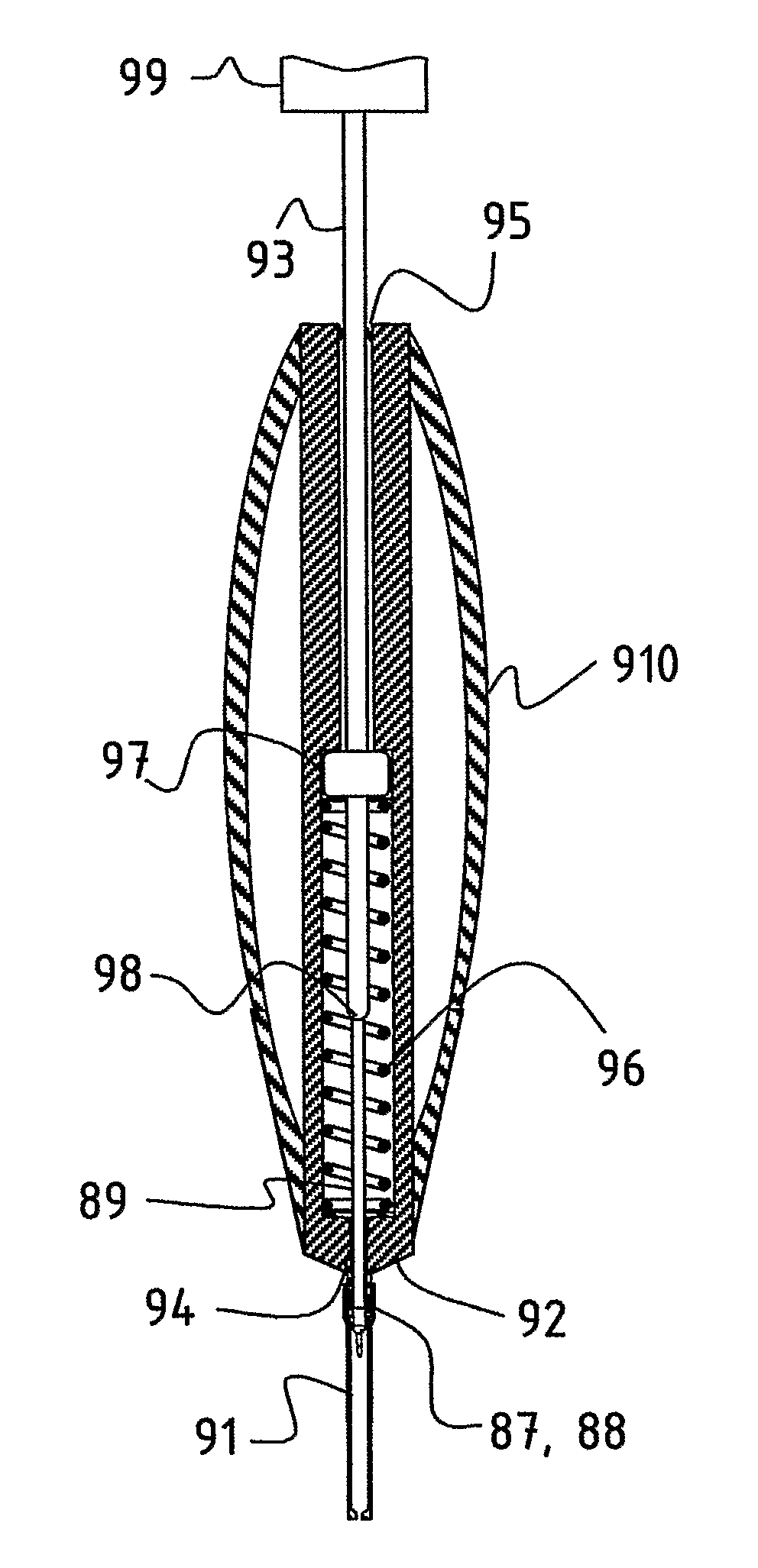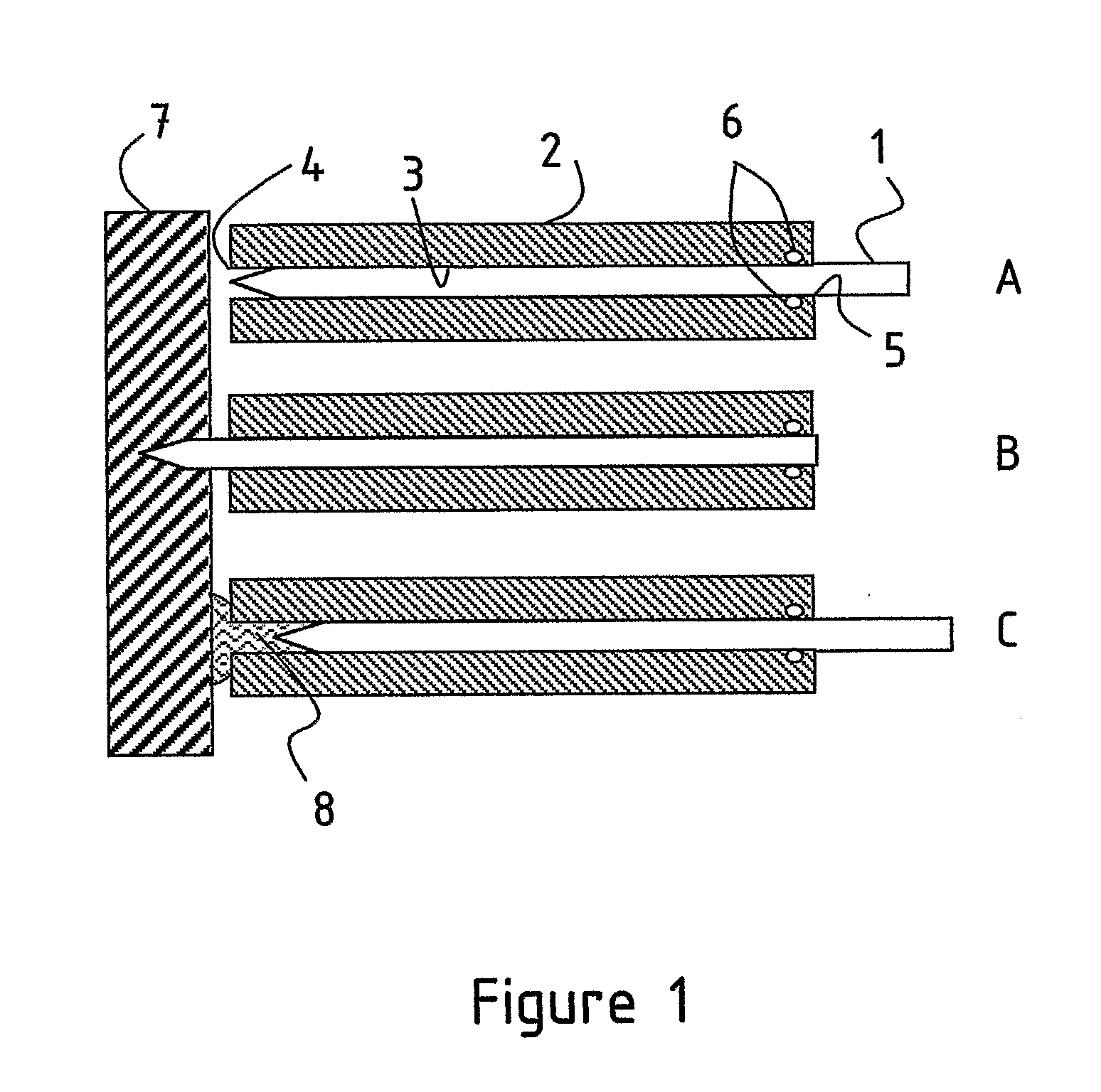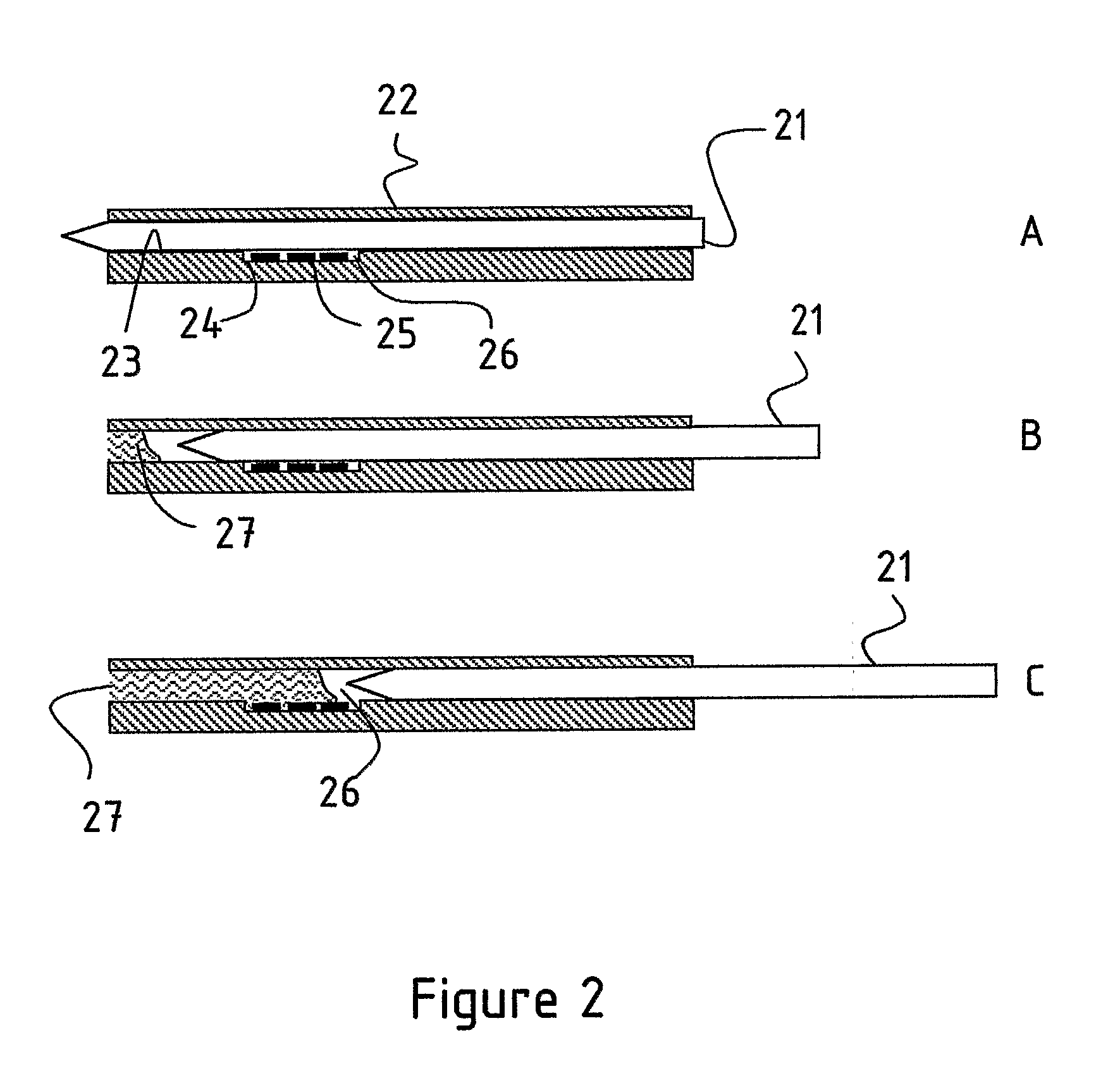Method and Apparatus for Sampling and Analysis of Fluids
a fluid sampling and fluid technology, applied in the field of fluid sampling and analysis methods and apparatuses, can solve the problems of inability to reverse to eject, deposit or retake samples, and the device has disadvantages for blood glucose determination application to blood sampling
- Summary
- Abstract
- Description
- Claims
- Application Information
AI Technical Summary
Benefits of technology
Problems solved by technology
Method used
Image
Examples
example 1
[0168] A device according to an embodiment of the present invention was fabricated by Cambridge Product Development Ltd (Huntingdon, Cambridge, England).
[0169] With reference to FIG. 18 (plan view), the device consists of a housing 182 of 2 cm length and 5 mm width incorporating a 0.67 mm diameter bore 183. A chamber 184 of 2 mm diameter×0.5 mm (approximately) high is connected to the bore. The position of this chamber is approximately 3 mm from the forward end of the bore. It can be appreciated that if this chamber were positioned at the forward end of the bore the fluid would be drawn directly into the chamber before any section of the bore. A lancet piston 181 of 0.67 mm OD and 32 mm length overall is inserted into this bore with the lancet point orientated towards the chamber end of the device. The lancet piston is provided with a feature 186 to enable the lancet piston to be gripped more easily. The volume of the bore is approximately 0.35 microliters per mm length and the vol...
example 2
[0182] A device according to an embodiment of the present invention may be fabricated by the following method.
[0183] A disposable syringe of 1 ml capacity (Becton Dickinson Plastipak) is adapted by first withdrawing the plunger rod completely and removing the rubber piston from the front end of the plunger rod. A counter bore of 1 mm diameter and 6 mm deep is drilled into the center of the front end of the plunger rod to accept a lancet tip.
[0184] A lancet tip is provided by cutting the plastic off a disposable “Softclix” lancet (Boehringer Mannheim) to recover a lancet of 0.75 mm diameter and 25 mm long with a ground lancet tip. The lancet is glued into the hole prepared in the front end of the plunger rod. The rubber piston is pierced through the center by the lancet, and is threaded along the lancet before being seated onto the end of the plunger rod. This results in the construction of a composite lancet piston with a piston seal. This assembly is inserted into the bore of the...
PUM
 Login to View More
Login to View More Abstract
Description
Claims
Application Information
 Login to View More
Login to View More - R&D
- Intellectual Property
- Life Sciences
- Materials
- Tech Scout
- Unparalleled Data Quality
- Higher Quality Content
- 60% Fewer Hallucinations
Browse by: Latest US Patents, China's latest patents, Technical Efficacy Thesaurus, Application Domain, Technology Topic, Popular Technical Reports.
© 2025 PatSnap. All rights reserved.Legal|Privacy policy|Modern Slavery Act Transparency Statement|Sitemap|About US| Contact US: help@patsnap.com



